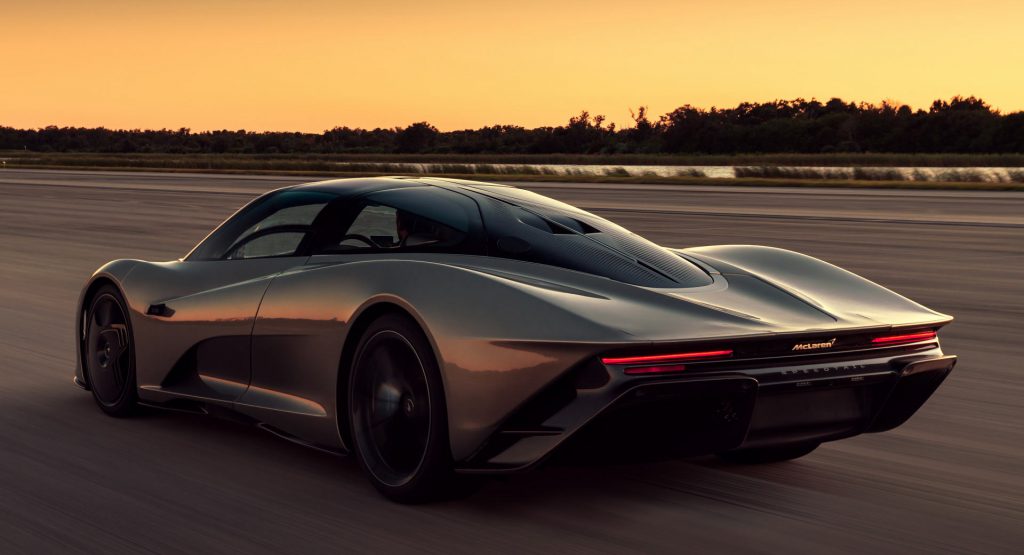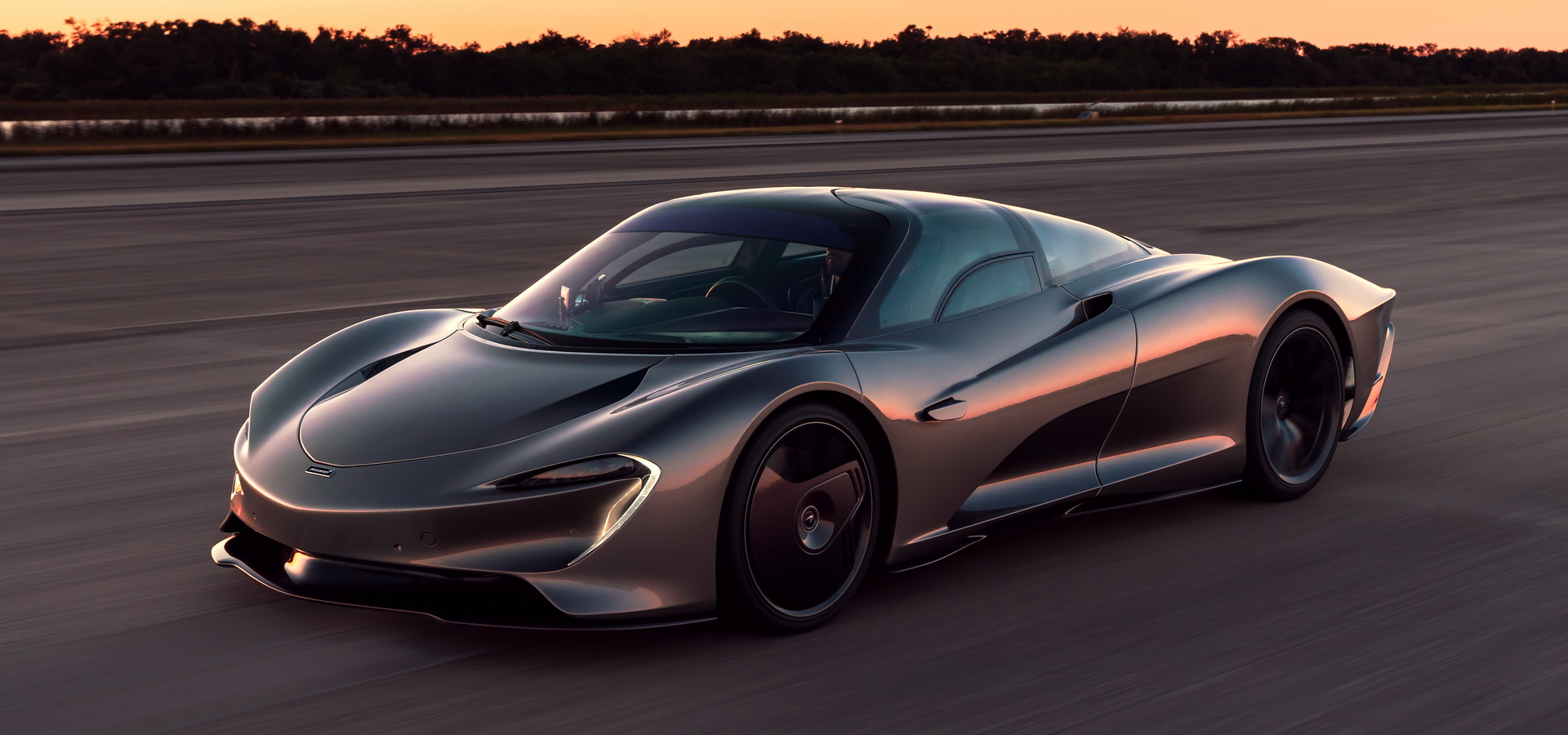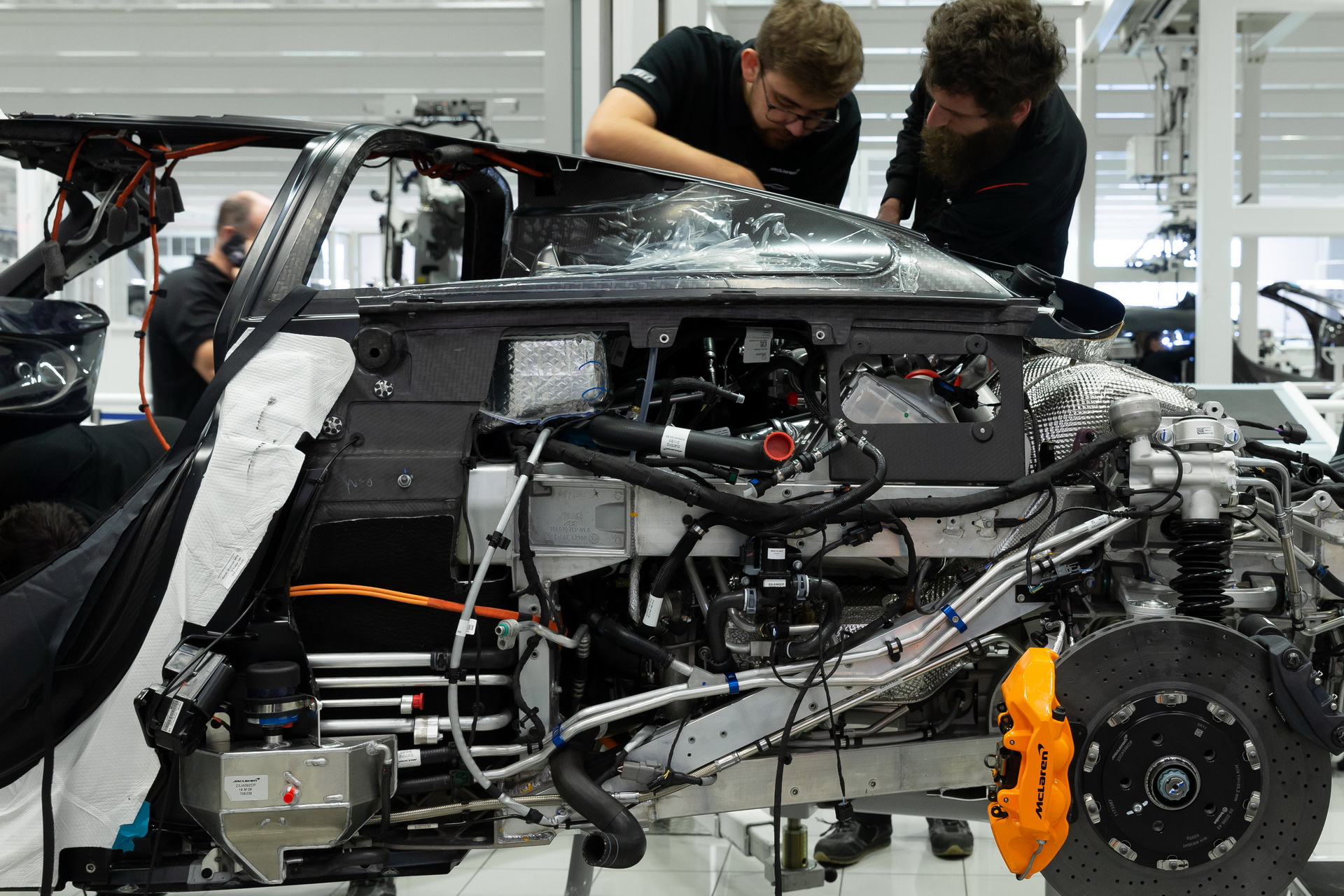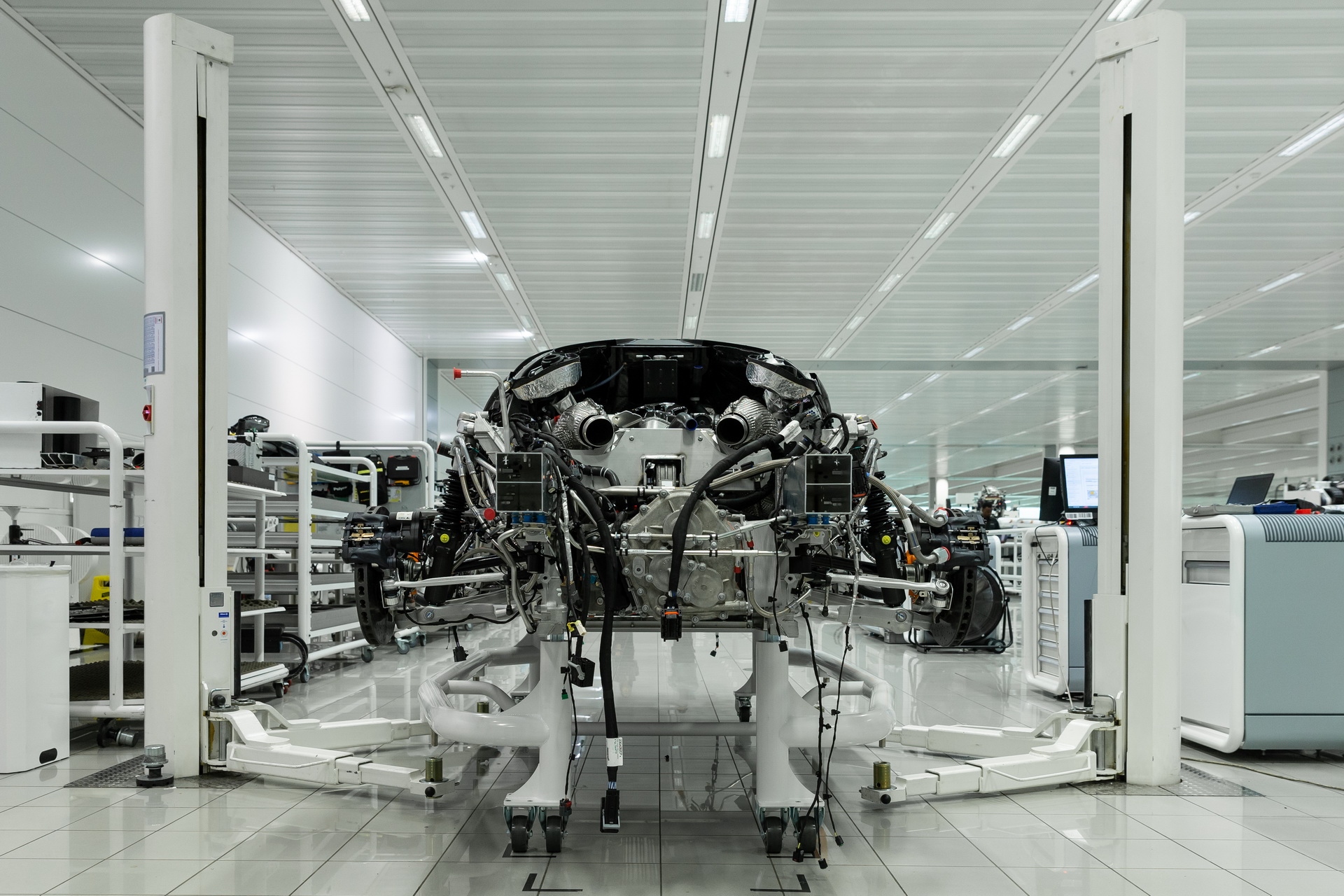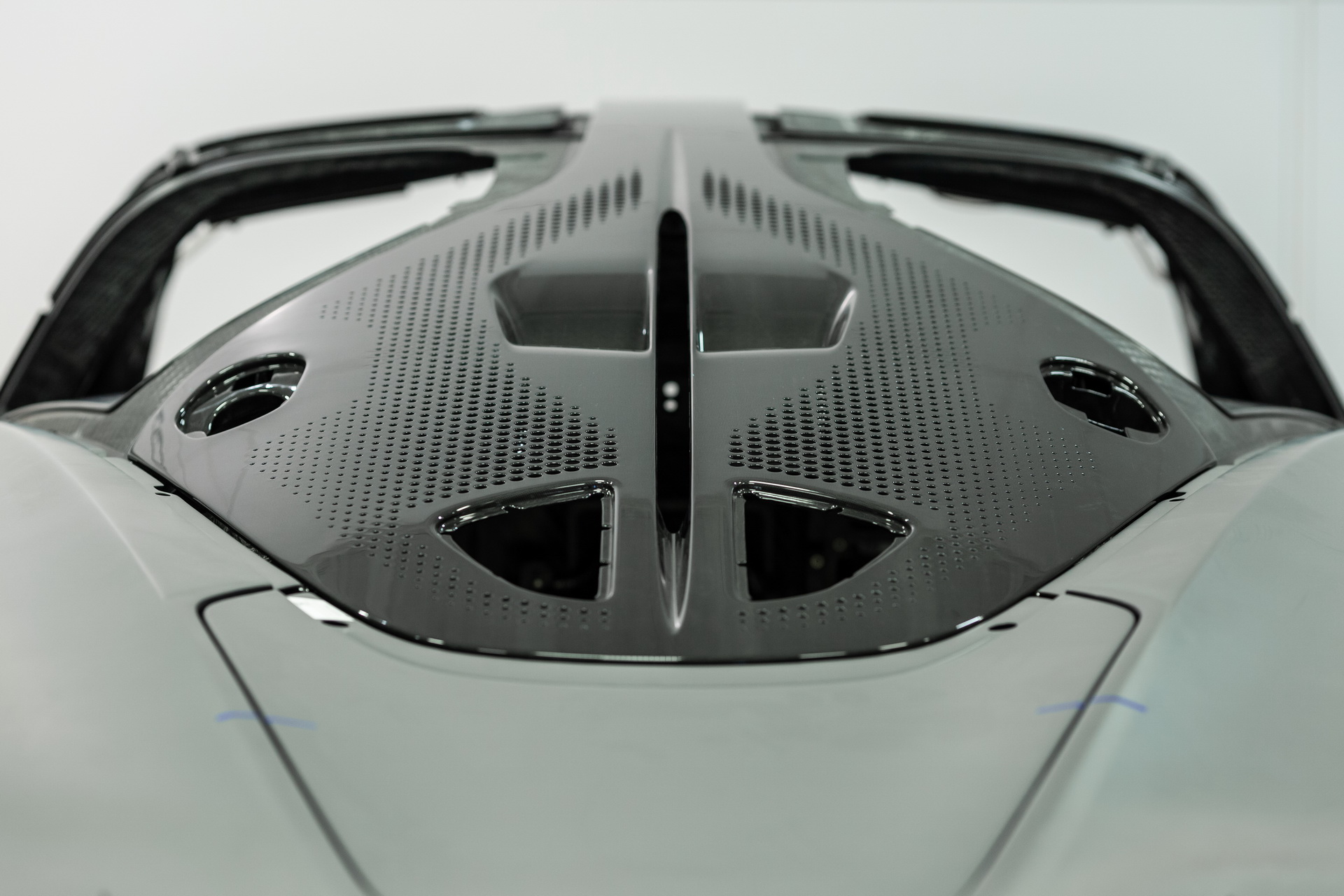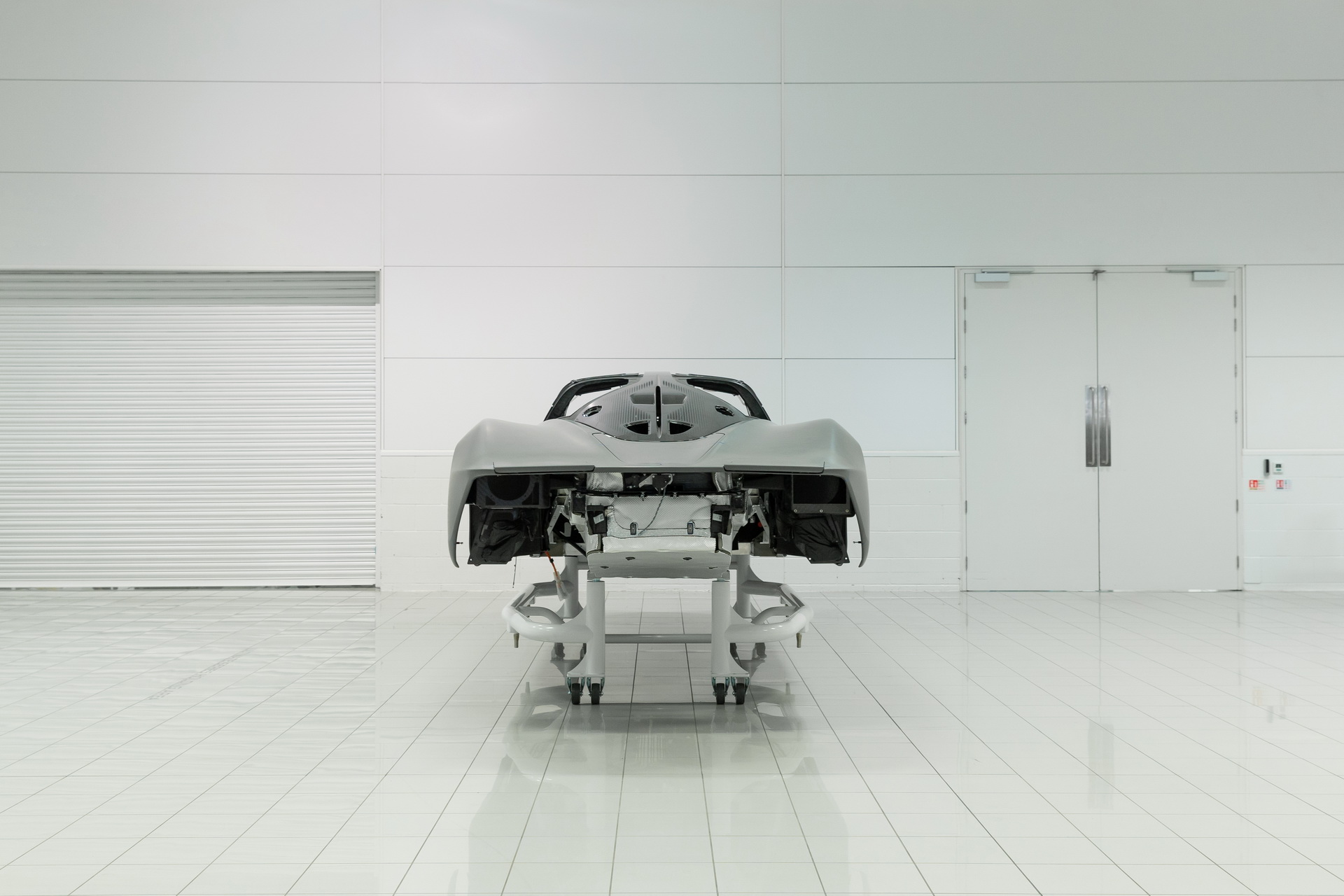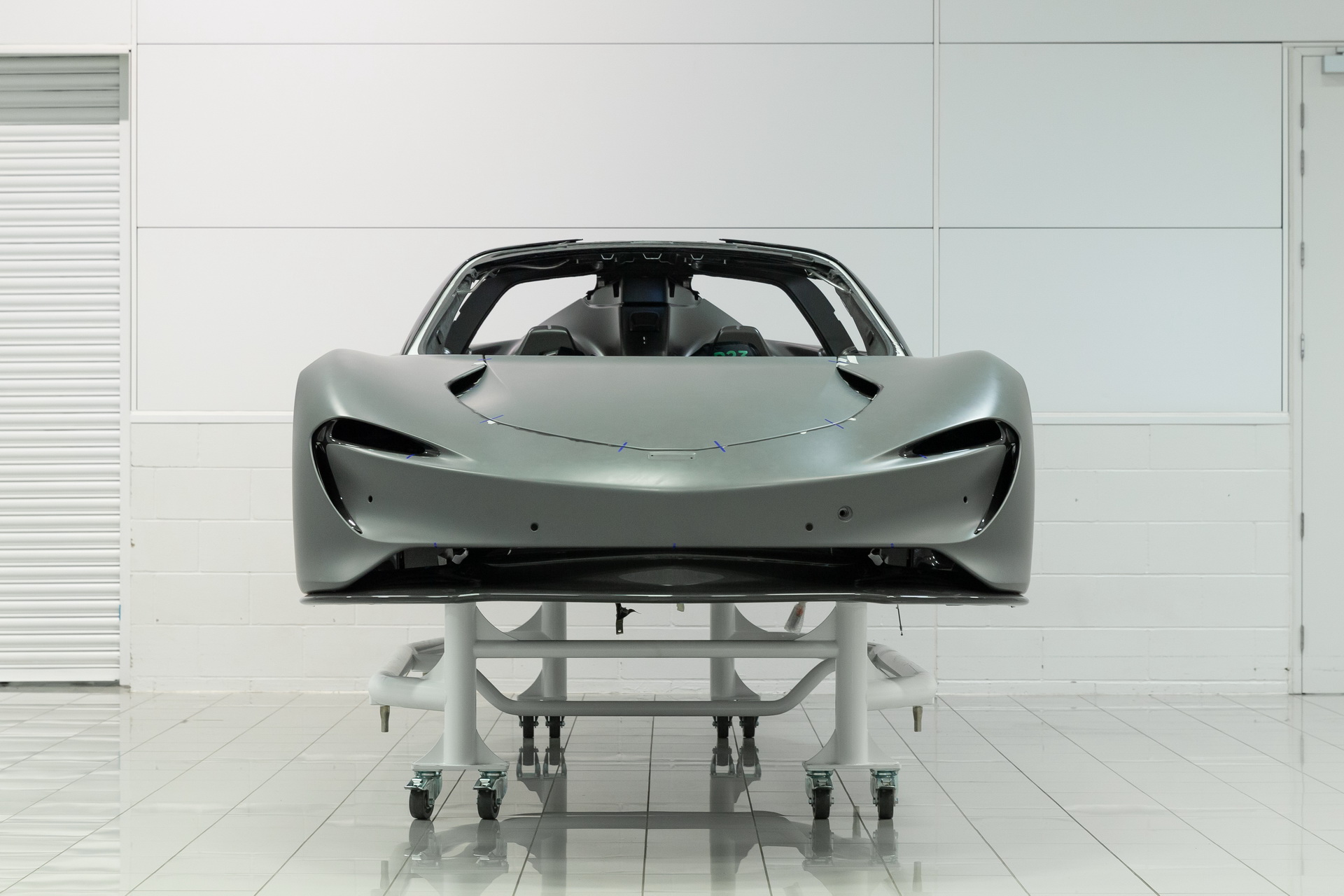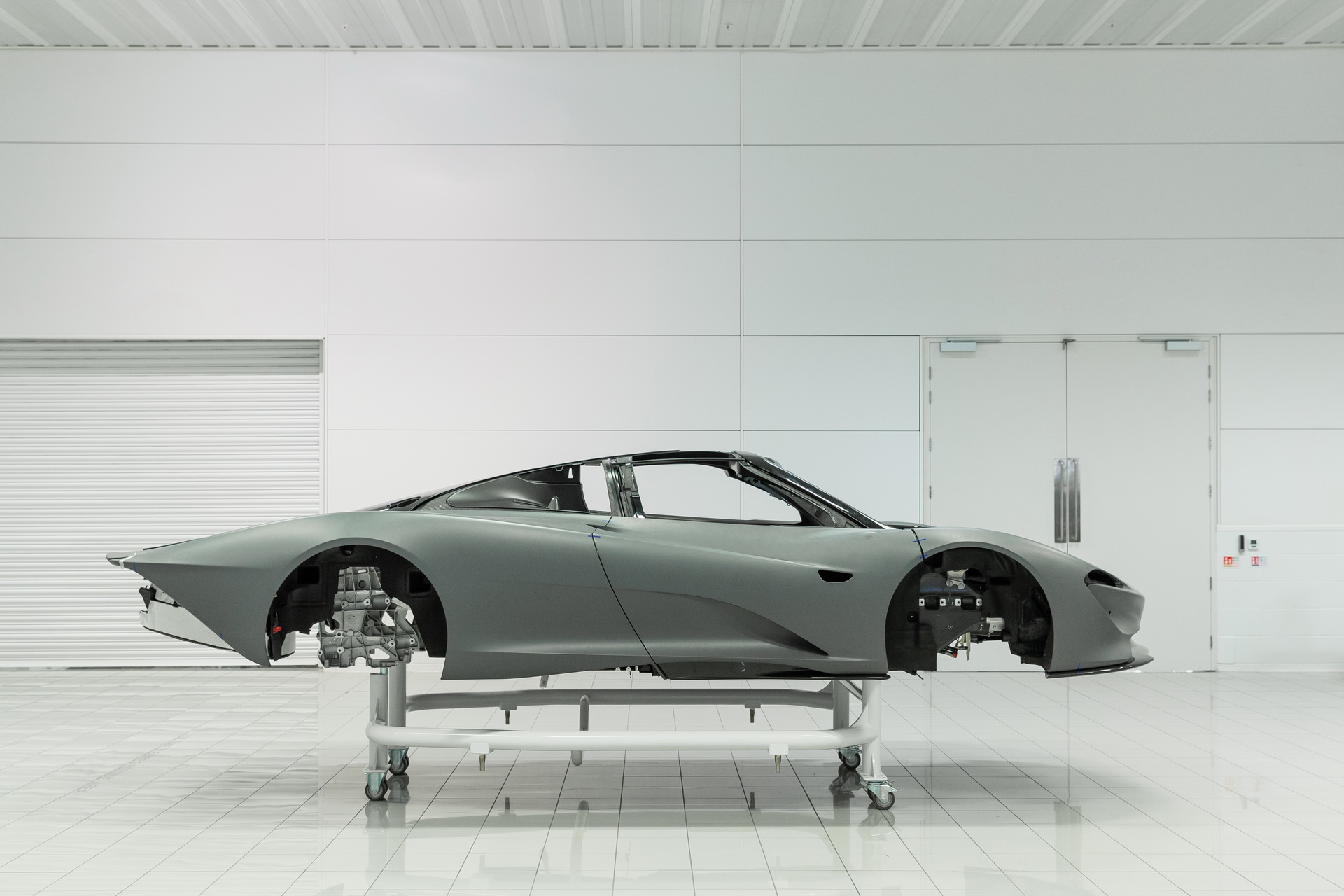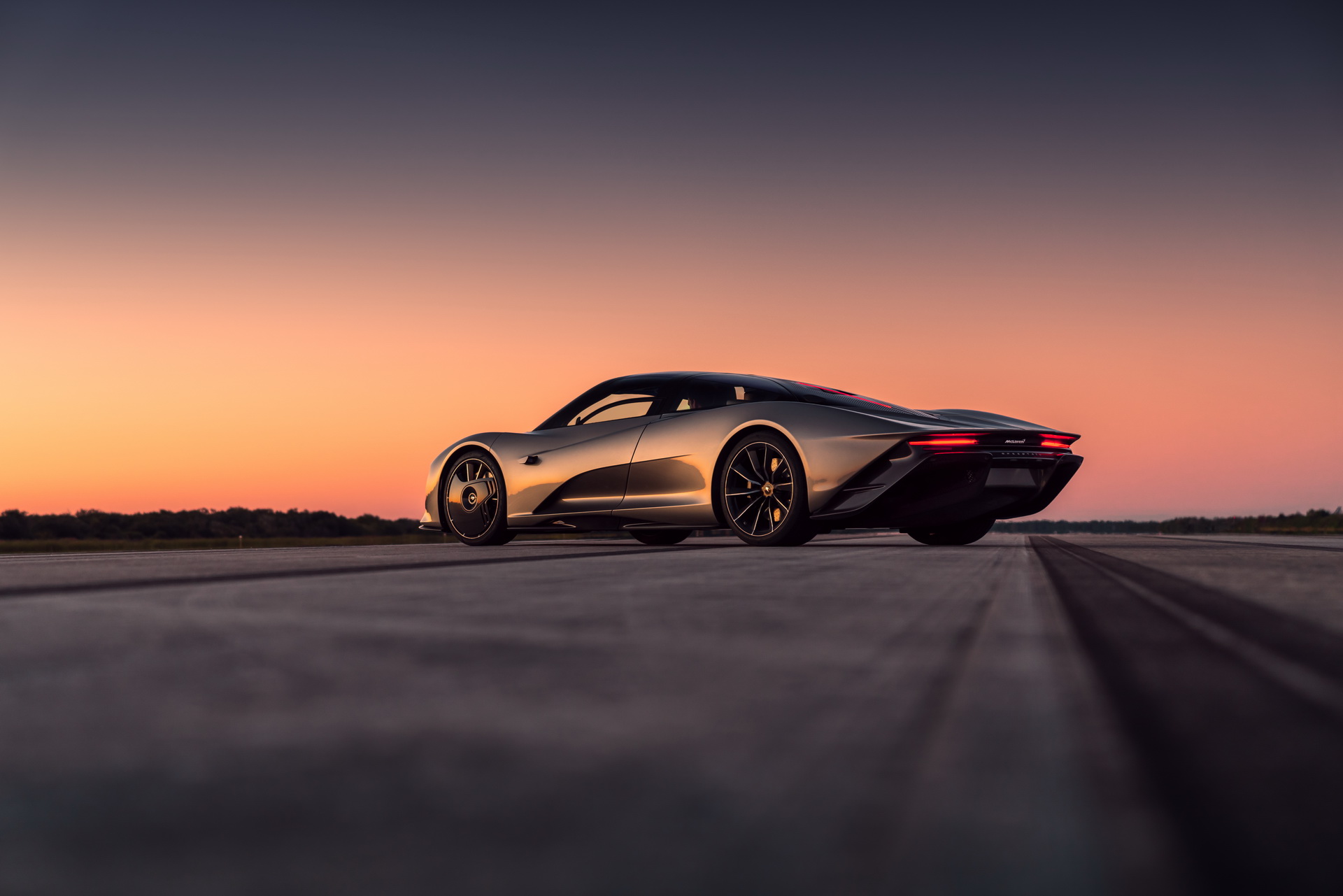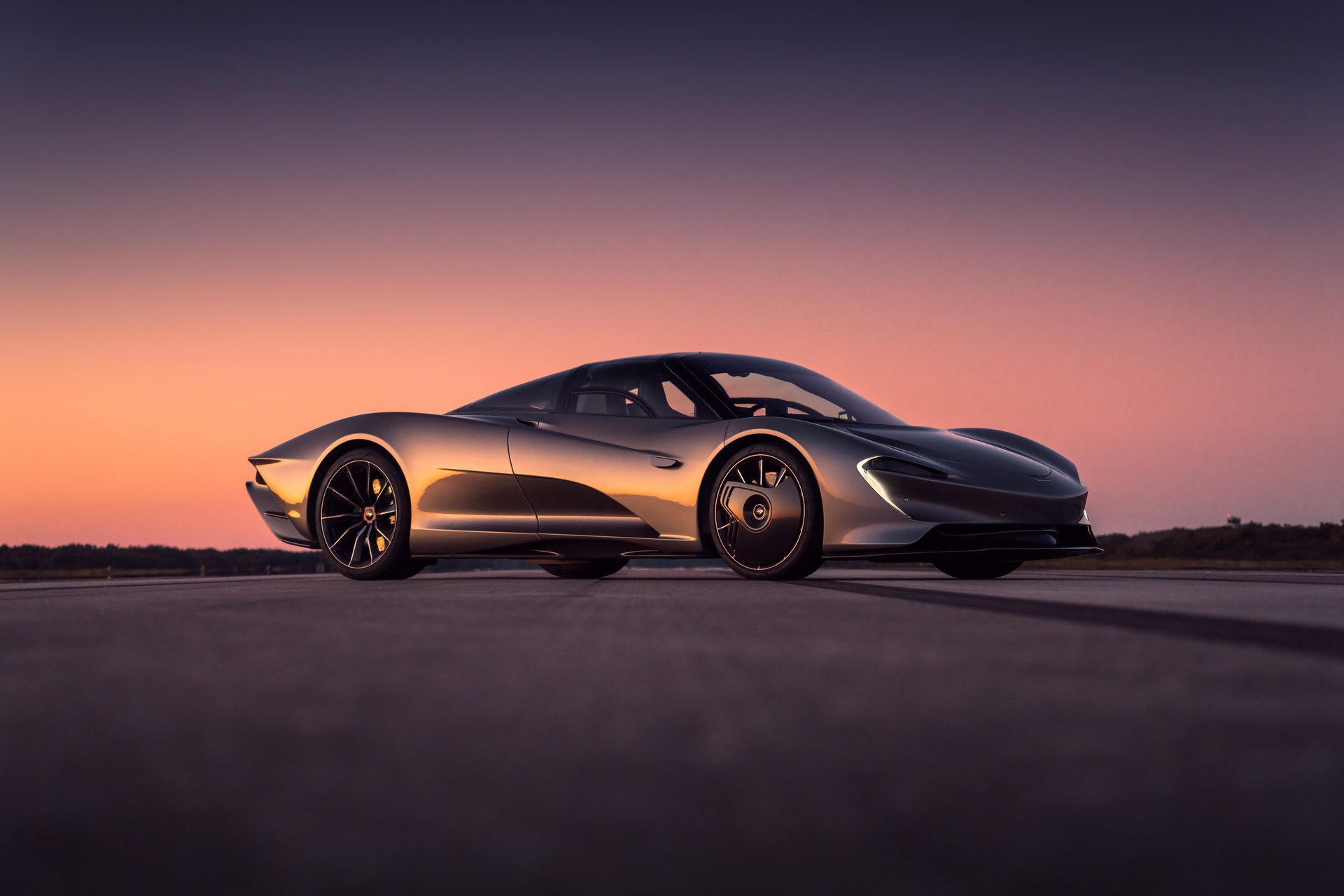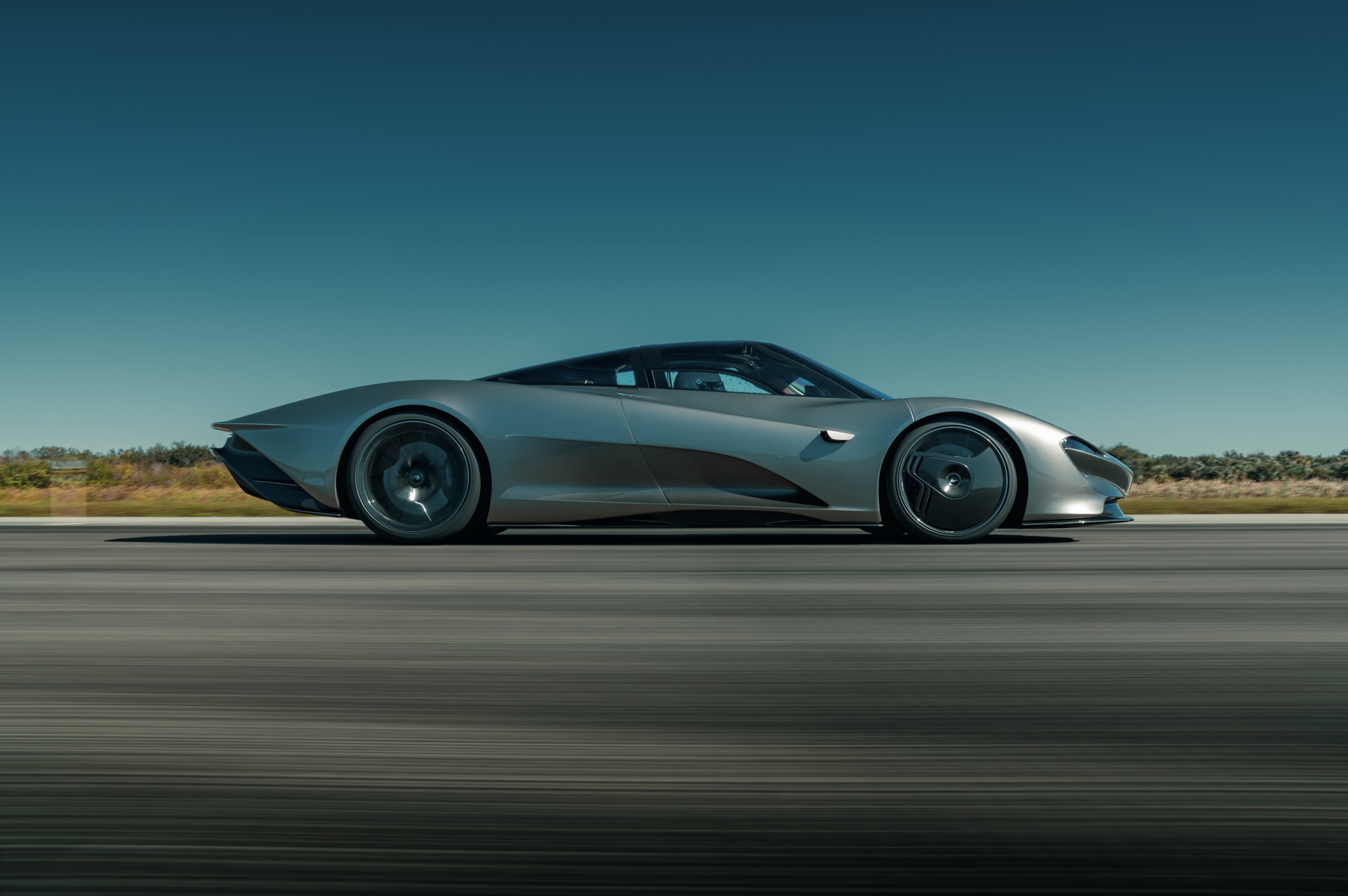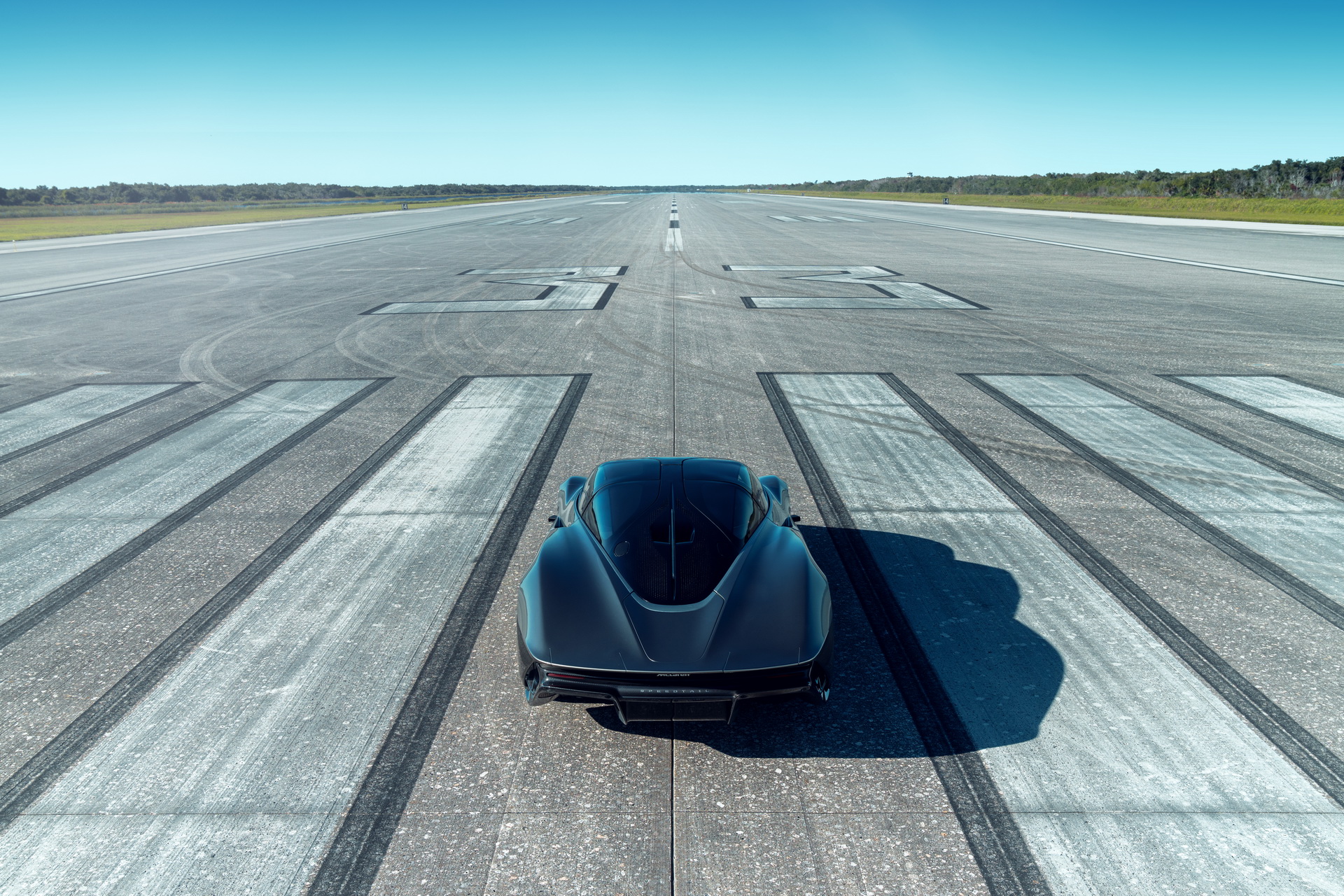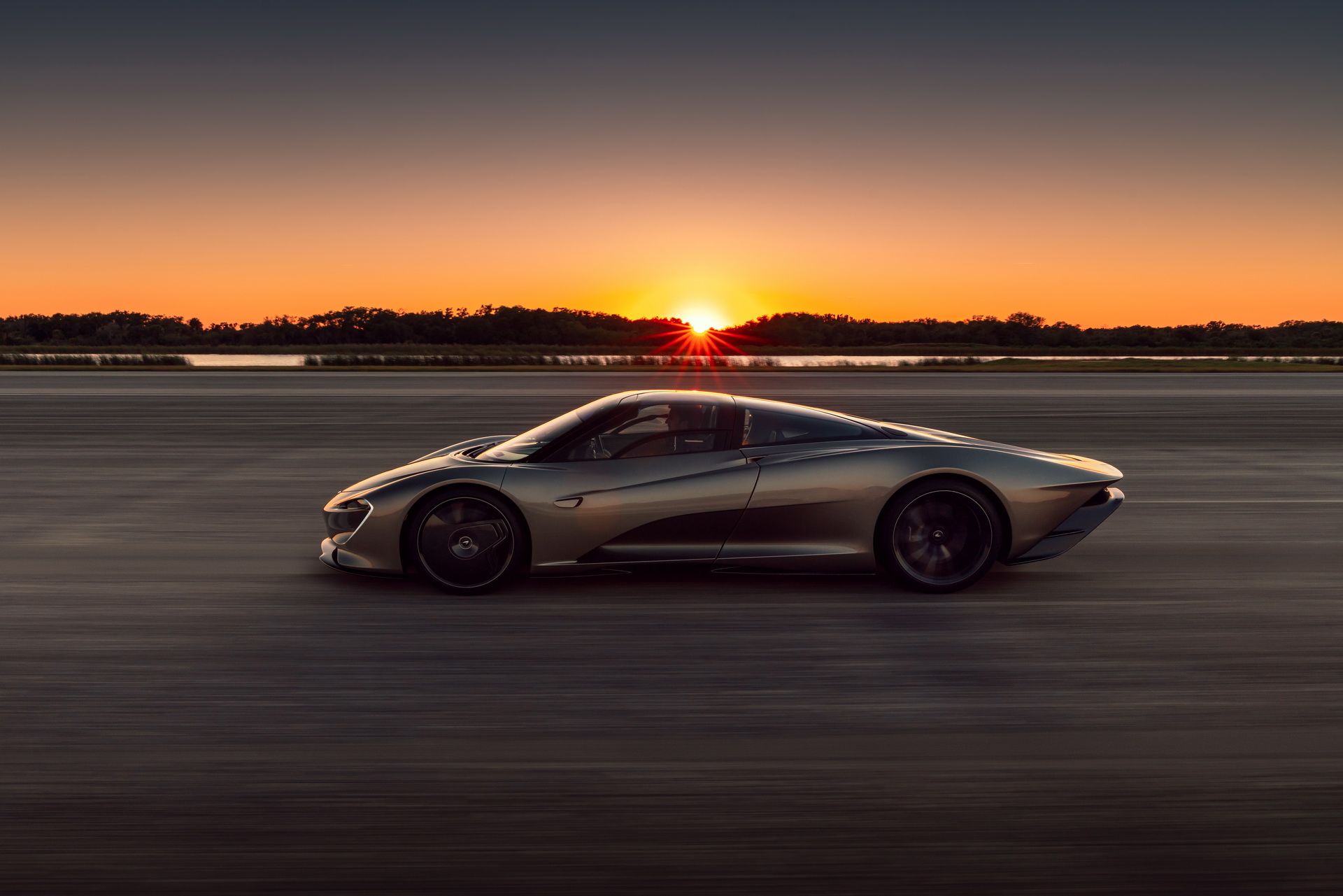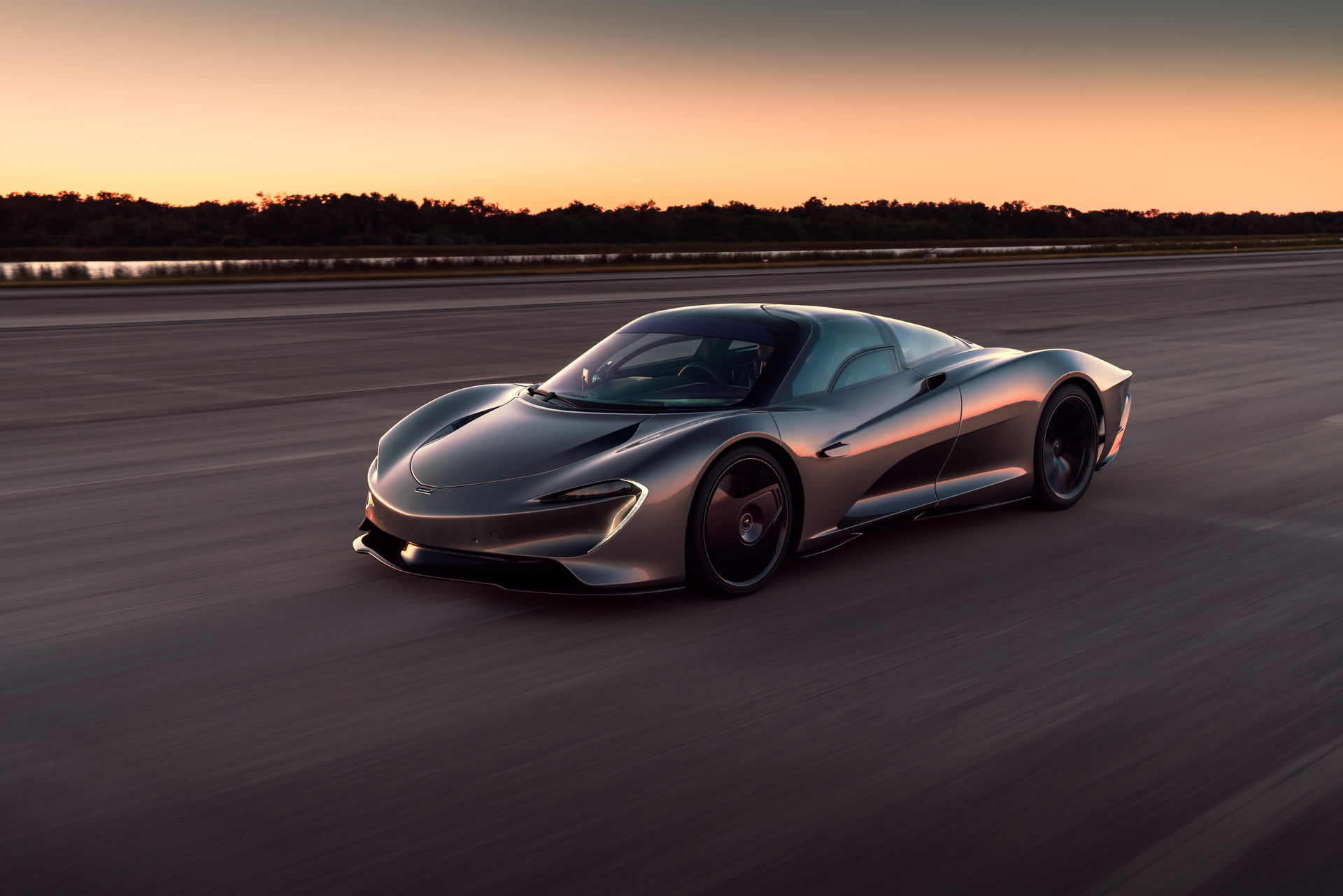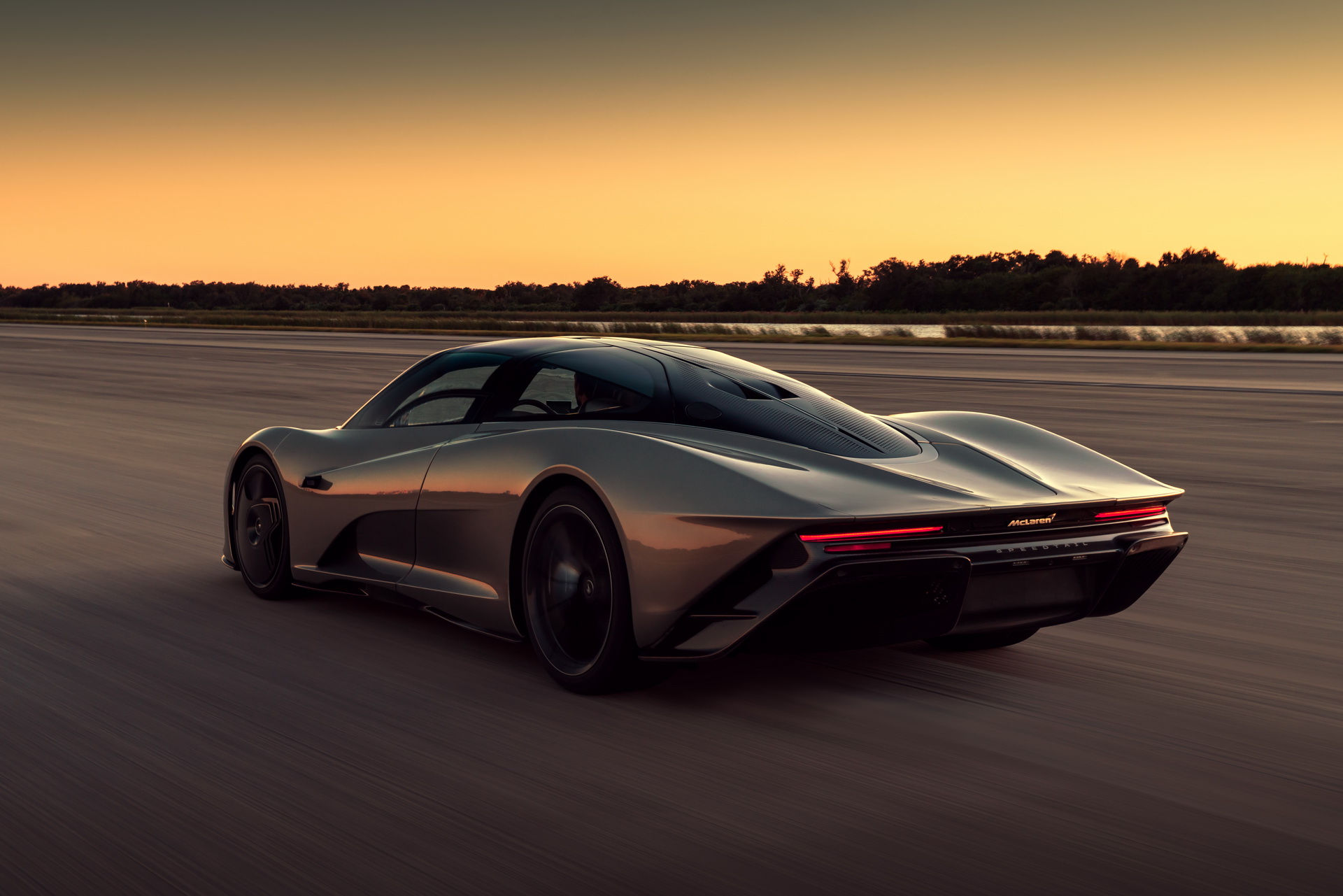A McLaren Speedtail prototype driven by the company’s chief test driver Kenny Brack was maxed out recently at the Kennedy Space Center in Florida.
The British Hyper-GT managed to hit its maximum speed of 250 mph (403 km/h) more than 30 times on the space shuttle landing runway at the Johnny Bohmer Proving Grounds. This exercise was the culmination of a high-speed running program, carried out at multiple facilities worldwide.
Production for the 106 Speedtails has now commenced at the McLaren Production Center in Woking, UK, with first deliveries scheduled for February 2020.
Also read: McLaren Speedtail Inching Closer To Production As Orange Prototype Hits The Streets
“It’s fitting that the Speedtail’s high-speed test programme concluded with multiple maximum-speed runs at a location strongly associated with pushing the boundaries of extreme performance and engineering excellence,” said McLaren Automotive CEO, Mike Flewitt. “The Speedtail is a truly extraordinary car that epitomises McLaren’s pioneering spirit and perfectly illustrates our determination to continue to set new benchmarks for supercar and hypercar performance.”
Powering the carbon fiber-built Speedtail is a petrol-electric hybrid unit that puts down a combined 1,070 PS (1,055 HP) and 1,150 Nm (848 lb-ft) of torque. The vehicle needs less than 13 seconds to hit 300 km/h (186 mph), and if you given enough room, it will max out at 403 km/h (250 mph) – repeatedly, as proven by these high-speed test runs.
According to McLaren, the Speedtail’s battery system (which constantly self-charges) has the best power-to-weight ratio in the automotive industry, while the car itself is the company’s most aerodynamically drag efficient product ever. As for other noteworthy features, we can’t forget about the cabin’s three-seat layout, putting the driver at the center of the monocoque chassis.







